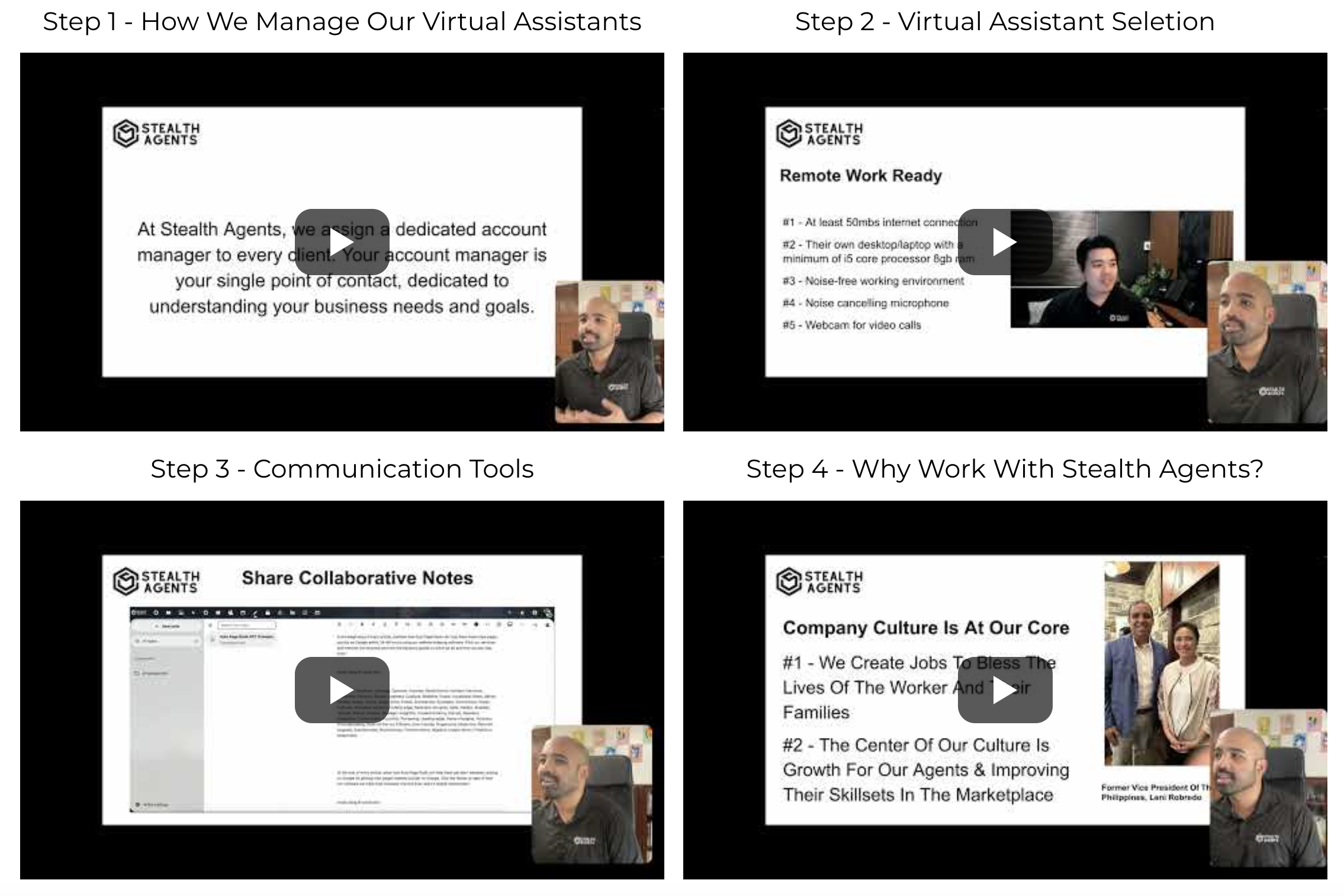Selecting the right tools for team collaboration and project management is essential for achieving success.
Slack and Trello, two leading platforms, offer unique services designed to boost productivity in their own ways.
Slack stands out as a communication hub, enhancing conversations with its user-friendly chat interface and extensive integration capabilities.
This makes it perfect for teams seeking to improve real-time collaboration, including those utilizing virtual assistant services to streamline tasks.
Conversely, Trello excels in project management, using its visually appealing boards and card system to help teams, including those working with virtual assistants, efficiently organize tasks and track progress.
While Slack emphasizes seamless communication, Trello offers a structured approach to managing tasks.
These are complementary tools that can be integrated into workflows effectively, especially when considering virtual assistant pricing and services.
Understanding these distinctions enables teams to incorporate each platform into their processes strategically.
Stealth Agents have carefully developed this resource to provide clear insights and guidance, demonstrating their dedication to offering valuable information that supports informed decision-making.
What is Slack?
Slack is a versatile communication tool designed to enhance team collaboration and streamline workflows in businesses of all sizes.
It serves as a central hub for messaging, enabling team members to communicate efficiently through direct messages and organized channels.
With its robust integration capabilities, Slack connects seamlessly with a wide range of third-party applications, allowing teams to manage tasks, share files, and automate processes all within the platform.
Its intuitive interface and search functionality make it easy to retrieve information, fostering transparency and accessibility across teams.
As a result, Slack has become an indispensable tool for modern workplaces, supporting real-time communication and collaboration.
Key Features:
- Channels: Organize conversations by topic, project, or team, ensuring discussions remain focused and relevant.
- Direct Messaging: Facilitate private conversations between team members for quick and direct communication.
- Integrations: Connect with over 2,000 apps, such as Google Drive, Trello, and Zoom, to centralize your workflow.
- File Sharing: Easily upload and share documents, images, and other files directly within conversations.
- Search Functionality: Advanced search options help users quickly find past messages, files, or channels.
Pros:
- Ease of Use: Slack’s user-friendly interface ensures that teams can quickly adopt the platform with minimal training, enhancing productivity from the get-go.
- Integration Capabilities: The ability to integrate with numerous third-party apps makes Slack a versatile tool that can cater to various business needs, eliminating the need to switch between multiple platforms.
- Real-Time Communication: Slack supports instantaneous messaging and notifications, keeping team members updated and engaged regardless of their location.
- Customization Options: Slack allows teams to customize their experience to suit individual or team preferences by allowing them to customize notifications, themes, and channel settings.
- Cross-Platform Accessibility: Available on desktop and mobile devices, Slack ensures seamless communication whether you’re in the office or on the go.
Cons:
- Cost: While Slack offers a free version, its more advanced features and functionalities are locked behind a subscription, which can be costly for larger teams.
- Information Overload: With the constant flow of messages and notifications, users may experience information overload, leading to potential distractions and decreased productivity.
- Learning Curve: New users might find the extensive features and integrations overwhelming at first, requiring time to fully utilize the platform’s capabilities.
- Dependency on Internet: Slack is entirely cloud-based, meaning that a stable internet connection is necessary for uninterrupted communication and access.
- Privacy Concerns: As with any digital communication tool, there are concerns about data security and privacy, especially when sensitive information is shared within the platform.
What is Trello?
Trello is a versatile project management tool designed to help individuals and teams organize tasks in a visually intuitive way.
It uses a system of boards, lists, and cards to represent projects and tasks, allowing users to easily track progress and collaborate with others.
Each board acts like a digital whiteboard where lists are created to represent different stages of a project, and cards within these lists represent tasks.
Trello’s user-friendly interface and flexibility make it a popular choice for managing personal tasks, team projects, and even complex workflows.
Its integration with other tools and services further enhances its functionality, making it adaptable to various industries and project needs.
Key Features:
-
Boards, Lists, and Cards: Trello’s core structure visually organizes tasks and projects, enabling users to manage workflows by categorizing tasks into stages for quick at-a-glance understanding.
-
Drag-and-Drop Interface: The intuitive drag-and-drop functionality allows users to effortlessly move cards between lists, streamlining task updates and enhancing user experience.
-
Collaborative Tools: Trello facilitates team collaboration by allowing comments, file attachments, and task assignments on cards, making it ideal for managing team-based projects.
-
Integration Options: With integrations to apps like Slack and Google Drive, Trello connects existing tools to streamline workflows and extend beyond basic task management.
- Automation with Butler: Trello’s Butler feature automates repetitive tasks based on specific triggers, enhancing productivity by saving time and minimizing human error.
Pros:
- Trello’s User-Friendly Design: Trello’s simple and visual layout ensures easy accessibility and immediate productivity for users of all skill levels.
- Flexible and Customizable Platform: Trello adapts to various project management styles, making it suitable for both personal use and complex team projects.
- Free Basic Plan: Trello’s free version offers robust features, ideal for individuals and small teams without financial commitment.
- Collaborative Features: Trello enhances teamwork through real-time collaboration and communication, keeping everyone aligned.
- Visual Progress Tracking: Trello provides a clear visual overview of project progress, aiding in maintaining timelines and meeting deadlines.
Cons:
- Limited Advanced Features: Trello’s limitations include a lack of advanced features needed for detailed analytics and resource management in complex projects.
- Overwhelming for Large Projects: Managing large projects on Trello can become cumbersome and cluttered, leading to organizational challenges without additional tools.
- Dependence on the Internet: Trello’s reliance on an Internet connection can hinder productivity in areas with poor connectivity due to limited offline functionality.
- Customization Needs: Achieving specific functions on Trello may require third-party integrations, potentially incurring extra costs and requiring customization efforts.
- Lack of Built-in Time Tracking: Trello lacks built-in time tracking features, necessitating external tools for teams that rely on detailed time management.
Slack vs Trello: Detailed Features Comparison
1. Communication and Collaboration Tools
Regarding communication, Slack is leading with its robust platform, which is focused on real-time messaging and collaboration.
Slack provides channels for organization-wide, team-specific, or project-related conversations, ensuring communication stays streamlined and accessible.
It supports direct messaging, group chats, and file sharing, creating an interactive and responsive environment.
Conversely, Trello focuses more on task management but offers basic communication features like commenting on cards, which is vital for project updates.
In the comparison between Slack and Trello, Slack offers a comprehensive suite of communication tools, while Trello integrates communication as a supportive feature of its core task management capabilities.
A Filipino communication specialist might find Slack’s extensive communication options particularly beneficial for managing diverse team interactions.
2. Task and Project Management
Trello stands out as a task and project management tool with its intuitive board, list, and card system, which simplifies visualizing project stages and task progress.
Each card can be enhanced with details like due dates, attachments, and checklists, providing comprehensive project oversight.
While Slack lacks built-in project management features, it compensates by integrating with the best project management software, such as Trello and Asana, to manage tasks effectively.
In the Slack vs Trello evaluation, Trello is clearly more adept at direct task management, whereas Slack enhances communication and can be paired with project management apps for a complete solution.
3. Integration Capabilities
Both Slack and Trello offer extensive integration options, enabling them to connect with a wide range of third-party applications.
Slack integrates seamlessly with over 2,000 apps, including Google Drive, Zoom, and GitHub, allowing users to bring multiple tools into one workspace.
Trello, while more focused on project-centric integrations, supports numerous Power-Ups that enhance its functionality, including tools for automation, time tracking, and reporting.
In the Slack vs Trello comparison, both platforms are strong contenders, with Slack excelling in communication-centric integrations and Trello offering powerful project management extensions.
4. User Interface and Experience
Slack’s user interface is designed for quick navigation and ease of communication, with a layout that emphasizes channels and direct messaging.
Its clean design makes it simple for users to switch between conversations and quickly access shared files and links.
Trello, on the other hand, boasts a visual and intuitive interface that aligns with its board-based task management approach, providing users with a clear snapshot of project status.
In the Slack vs Trello discussion, Slack provides a streamlined communication experience, while Trello offers an organized and visually appealing task management system, making each platform user-friendly in its respective domain.
5. Pricing and Accessibility
Slack offers a tiered pricing model, starting with a free version that includes limited features but is suitable for small teams.
Its paid plans expand capabilities with features like unlimited message history and advanced user management.
Trello also offers a free plan with generous features for basic use and paid plans to add Power-Ups, integrations, and automation tools.
In the Slack vs Trello pricing comparison, both platforms provide accessible entry points for users, with advanced features available at higher tiers to cater to growing business needs.
How Stealth Agents Choose Slack vs Trello?
When deciding between Slack and Trello, Stealth Agents align each platform’s strengths with their business and project needs.
In the Slack vs Trello evaluation, communication and task management are key factors in determining which platform best supports their operational goals.
For teams requiring robust, real-time communication and collaboration, Slack is the ideal choice with its extensive messaging and integration capabilities, benefiting those involved in virtual assistant services, including a Filipino virtual communicator.
On the other hand, Trello’s board and card system is invaluable for project management tasks that need visual organization and detailed task tracking, making it a great tool for a Filipino virtual customer communicator.
Stealth Agents also consider each platform’s integration capabilities with other essential tools, ensuring seamless workflow enhancements.
Additionally, they assess the scalability and flexibility of each platform to accommodate future growth and evolving project requirements.
Ultimately, understanding the unique advantages of Slack vs Trello empowers Stealth Agents to make informed decisions that enhance productivity and efficiency.
Conclusion
In the comparison of Slack vs Trello, each platform brings unique strengths to the table, serving different aspects of team collaboration and project management.
Slack fosters real-time communication, making it a go-to choice for teams that prioritize seamless interaction and integration with various apps.
Its robust messaging system ensures that everyone stays connected and informed.
On the other hand, Trello, with its board, list, and card system, offers a visual and intuitive approach to project management, perfect for teams that need to track tasks and project progress visually.
Choosing between Slack and Trello ultimately depends on your team’s specific needs—whether you need a communication hub or a project management tool will guide your decision.
Understanding these strengths helps in making a well-informed choice that aligns with your organizational goals and enhances productivity.












